Ascot AUK-WS-11 Handleiding
Ascot
Weerstation
AUK-WS-11
Bekijk gratis de handleiding van Ascot AUK-WS-11 (6 pagina’s), behorend tot de categorie Weerstation. Deze gids werd als nuttig beoordeeld door 136 mensen en kreeg gemiddeld 4.5 sterren uit 68.5 reviews. Heb je een vraag over Ascot AUK-WS-11 of wil je andere gebruikers van dit product iets vragen? Stel een vraag
Pagina 1/6

Helpline No. UK/Northern Ireland 0871 288 6921 Helpline No. UK/Northern Ireland 0871 288 6921 Helpline No. UK/Northern Ireland 0871 288 6921 Helpline No. UK/Northern Ireland 0871 288 6921
Rep. Ireland 014 319790 Rep. Ireland 014 319790 Rep. Ireland 014 319790 Rep. Ireland 014 319790
Web Support www.produktservice.info Web Support www.produktservice.info Web Support www.produktservice.info Web Support www.produktservice.info
Page 1
Weather Station
AUK-WS-11
Operating instructions
Issued: November 2007
Introduction:
Congratulations on choosing to buy an Ascot product. By doing so you
now have the assurance and peace of mind that comes with purchasing a
product made by one of Europe’s leading manufacturers. All products
brought to you by Ascot are manufactured to the highest standards of
performance and safety, and, as part of our philosophy of customer
service and satisfaction, are backed by our comprehensive 3 Year
Warranty. Please fill in and return the Warranty Card to the address
provided. We hope you will enjoy using your purchase for many years to
come.
1 Scope of application ...................................................................1
2 Safety and maintenance .............................................................1
2.1 Safety information ..............................................................1
2.2 Repair .................................................................................1
2.3 Conditions for operating environment ................................1
2.4 Ambient temperature ..........................................................1
2.5 Electro-magnetic compatibility...........................................1
2.6 Battery operation ................................................................1
2.7 Disposal..............................................................................1
2.7.1 Disposal of batteries ......................................................1
2.7.2 Disposing of the Weather Station..................................1
2.7.3 Disposing of the packaging ..................................................1
2.8 Maintenance .......................................................................1
2.9 Cleaning and care ...............................................................1
2.10 Storage................................................................................1
2.11 Information concerning these operating instructions ..........1
2.12 Contents..............................................................................2
3 Display and function keys..........................................................2
3.1 Base station.........................................................................2
3.2 External sensor ...................................................................2
4 Putting the device into operation ..............................................2
5 Modes / Function keys................................................................3
5.1 Time, date and time zone....................................................3
5.1.1 Radio clock time............................................................3
5.1.2 Manual Setting ..............................................................3
5.2 Phase of the moon...............................................................3
5.3 Rising and setting times of the sun and moon.....................3
5.4 Alarm..................................................................................4
5.4.1 Setting the alarm............................................................4
5.4.2 Switching the alarm on/off ............................................4
5.4.3 Snooze function.............................................................4
5.4.4 Turning off the alarm.....................................................4
5.5 Temperature and humidity..................................................4
5.5.1 Temperature and humidity display ................................4
5.5.2 Min/Max memory for temperature and humidity.......... 4
5.5.3 Deleting the min/max memory...................................... 4
5.5.4 Selecting °Celsius / °Fahrenheit.................................... 4
5.5.5 Trend display for internal and external temperature and
internal and external humidity ......................................................5
5.5.6 External sensor.............................................................. 5
5.5.7 Technical data, temperature and humidity..................... 5
5.6 Atmospheric pressure ......................................................... 5
5.6.1 Atmospheric pressure display ....................................... 5
5.6.2 Weather forecast............................................................5
5.6.3 Technical data for atmospheric pressure ....................... 5
5.7 Light ................................................................................... 6
6 Assembly.....................................................................................6
7 Change battery display and changing the batteries ................6
7.1 Base station ........................................................................ 6
7.1.1 Change battery display.................................................. 6
7.1.2 Changing the batteries................................................... 6
7.2 External sensor ................................................................... 6
7.2.1 Change battery display.................................................. 6
7.2.2 Changing the batteries................................................... 6
8 Declaration of conformity..........................................................6
9 Troubleshooting .........................................................................6
1 Scope of application
This weather station has been designed for use solely as a weather
station. Weather stations supply information about room climate, can be
used to forecast the local weather and to receive information about the
external temperature, external humidity, and can give information about
frost (car drivers, agriculturalists, etc.). The weather station can be used
in the customer’s domain within the specified tolerances. Do NOT use
the weather station for commercial or professional weather forecasts. It
is not permitted to use the weather station for purposes other than those
described in the operating instructions as this may result in damage and
injury. No liability will be accepted for claims arising from improper
use. You will find further instructions and explanations in the operating
instructions.
2 Safety and maintenance
2.1 Safety information
Please read this section carefully and follow all the information given.
This will ensure reliable operation and ensure that the weather station
will serve you for a long time. Keep the packaging and operating
instructions in a safe place so that you can give these to the new owner if
you sell the weather station.
Never open the base station housing and the external sensor housing.
These do not have any parts to be maintained (the exception to this is
opening the battery compartments to insert or change the batteries. See
point 7 Change battery display and changing the batteries). Do not put
any objects on the base station or on the external sensor and do not exert
any pressure on the display. This could cause the display to break. To
avoid damage do not touch the display with sharp objects.
2.2 Repair
In the event of necessary repair or a technical problem, please contact
our service centre. You will find the address on the guarantee card.
2.3 Conditions for operating environment
The base station is not protected against splashes. Ensure that your base
station is not subject to wet conditions or constant high levels of
humidity and avoid conditions which are dusty, hot and long periods of
direct sunlight. In order to ensure optimum radio registration, place or
hang the base station in a stable position, but not on a metallic surface.
The external sensor is protected against splashes. To use the device
outdoors, please choose a location in which the external sensor is not
exposed to rain or direct sunlight. Ignoring this information may result in
faults or damage to the weather station or the external sensor.
2.4 Ambient temperature
The base station can be operated constantly in an ambient temperature
from 0° to 50°C. It should only be exposed to temperatures from -10° to
0°C for short periods. If the base station is not being used, it can be
stored at temperatures of between -10° to 50°C. The external sensor can
be operated constantly in an ambient temperature from -10° to 50°C. It
should only be exposed to temperatures of -25° to -10°C and 50°C to
60°C for short periods of time. If the external sensor is not being used, it
can be stored at temperatures of between -10° to 50°C.
2.5 Electro-magnetic compatibility
If possible, do not place the base station or the external sensor near to
computers, printers, television sets, mobile telephones or radios as
devices with strong EMC rays and other radio stations can interrupt or
prevent radio reception.
2.6 Battery operation
The base station is operated by two 1.5v AA batteries and the external
sensor is operated by two 1.5v AAA batteries. Below you will find
information about using batteries.
Always replace batteries with batteries of the same type. Batteries must
not be recharged or reactivated by other means. Do not dismantle
batteries, throw them in the fire or shortcircuit them. Always keep
batteries out of the reach of children. Batteries can be harmful if
swallowed. Therefore keep batteries and the weather station out of the
reach of infants. If a battery is swallowed, seek medical help
immediately.
Batteries cannot withstand heat. Avoid allowing the base station or the
external sensor and therefore the batteries from becoming too hot.
Ignoring this information may result in damage and in some
circumstances may cause the batteries to explode. Temperatures of
below 0°C can have a negative effect on the life of batteries. You will
find information on changing batteries under point 7, Change battery
display and changing batteries.
Tip: Please position the external sensor in such a way that it is not
exposed to extremes of heat or cold. In extremely cold conditions, the
batteries and therefore the transmission signal will be adversely affected.
2.7 Disposal
2.7.1 Disposal of batteries
Batteries should not be disposed of with household waste. Batteries can
be disposed of correctly by shops selling batteries and at municipal
recycling points where there are appropriate containers.
2.7.2 Disposing of the Weather Station
When you wish to dispose of your Weather Station, please refer to
current conditions. Your local authority will give you their current
information.
Importer: 11/2007
KRIPPL-WATCHES
Warenhandels GmbH
Maria-Theresia-Straße 41
A-4600 Wels
2.7.3 Disposing of the packaging
Dispose of the Weather Station packaging according to current
conditions. Your local authority will give you their current information.
2.8 Maintenance
Note: There are no parts inside the Weather Station housing which need
maintenance or cleaning.
2.9 Cleaning and care
Clean the base station and the external sensor using a soft, damp, lint-
free cloth only. Do not use solvents, abrasive or gaseous cleaning agents.
Take care that drops of water do not remain on the display. Water can
cause long-term discoloration. Do not expose the base station display or
the external sensor display to glaring sunlight or ultra-violet rays.
2.10 Storage
Remove the batteries if you are not going to use the Weather Station for
a while. To store the Weather Station, please note the information in
point 2.3, Operating environment conditions and point 2.4, Ambient
temperature. The base station and the external sensor should be stored
safely. Avoid high temperatures (e.g. direct sunlight) and permanently
damp environments.
2.11 Information concerning these operating
instructions
We have structured these operating instructions for the Weather Station
so that you can find the relevant information by topic using the table of
contents.
As additional help for your Weather Station, use the FAQs (frequently
asked questions) which can be called up on our product service page on
the Internet. http://www.produktservice.info EAN Code: 25041101
You can also contact us at the following address if you have any other
questions:
Service address: Freepost RLTU-ZYZE-SKLG
KRIPPL-WATCHES
212 Piccadilly
London W1J9HG
E-mail address: service@produktservice.info

Helpline No. UK/Northern Ireland 0871 288 6921 Helpline No. UK/Northern Ireland 0871 288 6921 Helpline No. UK/Northern Ireland 0871 288 6921 Helpline No. UK/Northern Ireland 0871 288 6921
Rep. Ireland 014 319790 Rep. Ireland 014 319790 Rep. Ireland 014 319790 Rep. Ireland 014 319790
Web Support www.produktservice.info Web Support www.produktservice.info Web Support www.produktservice.info Web Support www.produktservice.info
Page 2
After Sales Support
Now you have purchased an Ascot product you can rest assured in the
knowledge that as well as your 3 year parts and labour warranty you
have the added peace of mind of dedicated helplines and web support.
What your three year warranty means:
Great care has gone into the manufacture of this product and it should
therefore provide you with years of good service when used properly. In
the event of product failure within its intended use over the course of the
first 3 years after date of purchase, we will remedy the problem as fast as
possible once it has been brought to our attention. In the unlikely event
of such an occurrence, or if you require any information about the
product, please contact us via our helpline support services, details of
which are to be found in this manual.
This warranty does not affect your statutory rights.
2.12 Contents
1 base station
1 external sensor
1 x 1.5v AA batteries for the base station
2 x 1.5v AAA batteries for the external sensor
1 set of operating instructions
Tip: Not included in the pack are further external sensors or sensor
extension cable for the external sensors.
3 Display and function keys
3.1 Base station
Front view of the base station
- Time, date, alarm
Radio clock time / quartz clock
Displays day, month and day of the week
Time in 12 or 24-hour clock format
Time zone setting +/- 12 hours
2 alarm settings with snooze function
Transmitter call function for the radio clock time
Radio tower symbol
- External temperature and air humidity display
External temperature for up to 3 external sensors:
- current reading
- min/max memory
- display in °C / °F
- trend display:
External air humidity for up to 3 external sensors:
- current reading
- min/max memory
- trend display
Display of selected external sensor or automatic switching between
sensors
Low battery indicator for external sensors
- Internal temperature and air humidity display
Internal temperature: - current reading
- min/max memory
- display in °C / °F
- trend display
Interior air humidity: - current reading
- min/max memory
- trend display
Low battery indicator for base station
- Weather forecast
Weather forecast with 5 symbols
Weather tendency
- Air pressure
Air pressure display:
- Display in hPa
- min/max memory
- Air pressure diagram
Display of the development of air pressure over the past
12 hours in 5 stages
- Moon phase, time of sunrise and sunset, time of moonrise and
moonset
Phase of the moon
Time of sunrise and sunset
Time of moonrise and moonset
Select region and city
- Light
View of base station from above
Rear view of base station
3.2 External sensor
Front view of external sensor
Rear view of external sensor
4 Putting the device into operation
We recommend that you read the operating instructions carefully before
using the Weather Station for the first time. In particular, before using
the device for the first time, please read point 3.1, Base station and point
3.2, External sensor to become familiar with the Weather Station’s
function keys.
Put the device into operation on a table where you can lay the base
station and the external sensor next to each other or stand them upright
1. Remove the battery compartment cover located at the rear of
the base station.
2. Also remove the battery compartment cover located at the rear
of the external sensor. First push the retractable stand in the
direction of the arrow so that you can remove the battery
compartment cover. Please unscrew the battery compartment
cover using a small screwdriver.
Tip: Please note that the batteries must be inserted in the base
station first and then in the external sensor otherwise the base
station may fail to receive the external sensor’s signal.
3. First insert the 2 x 1.5V AA batteries in the base station’s
battery compartment (note +/- polarity).
Tip: Please ensure that the batteries are new and are the correct
size.
When you have inserted the batteries correctly, this will be
confirmed by an audible tone. Now you can close the battery
compartment again with the compartment cover.
4. Then insert the 2 x 1.5V AAA batteries in the external sensor’s
battery compartment (note +/- polarity). Leave the battery
compartment open so that you can set more settings.
Tip: Please ensure that the batteries are new and are the correct
size.
1
4
5 3
2
6
7
1
2
3
4
5
6
7 Connector for
sensor extension
cable (not
included)
Display for external
temperature in °C/°F
and humidity
TX ke
y
C/F ke
y
Retractable
stan
d
Channel
Hanging kit for
wall assembl
y
Batter
y
Batter
y
com
p
artment
Screws for battery
compartment cover
Battery
com
p
artment
Battery-change
indicator
Stan
d
Transmitting
signal indicator
Channel
indicator
LIGHT/SNOOZE key
SET/ZONE key
CHANNEL key
ALARM key MIN/MAX key CLEAR/SET/BARO
key
‚+ ’ key ‚- ’ key B▲ key B▼ key

Helpline No. UK/Northern Ireland 0871 288 6921 Helpline No. UK/Northern Ireland 0871 288 6921 Helpline No. UK/Northern Ireland 0871 288 6921 Helpline No. UK/Northern Ireland 0871 288 6921
Rep. Ireland 014 319790 Rep. Ireland 014 319790 Rep. Ireland 014 319790 Rep. Ireland 014 319790
Web Support www.produktservice.info Web Support www.produktservice.info Web Support www.produktservice.info Web Support www.produktservice.info
Page 3
5. Shortly after inserting the batteries, the base station will begin
to search for the DCF77 signal for the radio clock, indicated by
the flashing radio tower symbol.
Radio tower symbol
The base station will receive the radio clock signal within 4 minutes and
this will be displayed by a constant radio tower symbol. If this is not the
case (the radio tower symbol will not be visible), then press the ‘– ‘
key until you hear a signal tone. The radio tower will appear and it will
try for another 4 minutes to receive a radio clock signal. If it is not
possible to receive a signal at the location of use, you can set the time
manually (see point 5.1.2, Manual setting) or alter the location of the
base station (see point 9, Troubleshooting).
Tip: The search process will be interrupted if you press the ‘+ ‘, or ‘–
‘ or the LIGHT/SNOOZE key.
6. After inserting the batteries, the external sensor will begin to
transmit the measured temperature and air humidity, seen by
the flashing of the red indicator on the front of the external
sensor. The displays for the external temperature and the
external air humidity will then show on the base station once
the search for the radio clock signal has finished.
If the transmission of the initial signal does not work, or if you
would like to speed up the process, press the TX key in the battery
compartment on the rear of the external sensor and the transmission
of the signal will then be activated manually.
The external sensor is set in the factory so that the transmission of the
signal takes place on channel 1. Wait a moment until the temperature is
shown on channel no. 1 on the main device. The sensor is now registered
on channel 1.
In order to ensure the transmission of the signal, the base station and the
external sensor should be a maximum of 40 metres apart. The range can
be limited by stonework, reinforced concrete, metal-framed windows
and fog. Overlapping radio waves can also affect reception. The external
sensor measures the temperature and humidity at intervals of 30 seconds.
If the data between the two measurements deviate only slightly from one
another then there will be no transfer to the base station. In order to
register a second or third external sensor (not included in delivery),
please read point 5.5.6c, Registering a second or third external sensor
Now you can screw the external sensor’s battery compartment cover
back on. As soon as the radio clock time is shown, we recommend you
set it in following way.
7. Frankfurt am Main, Germany is set by the factory as the basis
of calculation for the rising and setting of both the sun and the
moon. In order to receive the correct display for the rising and
setting of the sun and moon for your location, it is necessary to
take the setting for your country or the adjacent town to your
location as given in point 5.3, Rising and setting of the sun and
moon.
8. After inserting the batteries, the base station will begin by
displaying humidity of 1013 hPa (factory setting). In order to
receive a useful weather forecast it is necessary to configure
the settings specified as in point 5.6.1a, Setting the
atmospheric pressure values. This completes the process of
putting the Weather Station into operation. You can now place
or hang the external sensor where you want it to be (see point
6, Assembly).
5 Modes / Function keys
5.1 Time, date and time zone
5.1.1 Radio clock time
The time basis for the radio-controlled time display is one of the cesium
atom clocks operated by the Physikalischen-Technischen Bundesanstalt
in Brunswick, Germany. This time is coded (DCF77) and is transmitted
by a long-wave transmitter in Mainflingen near Frankfurt over a
transmission range of some 1,500 km. If your Weather Station is within
this transmission area, it receives this signal, converts it and always
displays the precise time and date irrespective of summer or wintertime.
Several times a day the radio clock time is automatically synchronised
by the base station in order to correct any possible deviations. If it is not
possible to receive a radio signal at the location of use, the time can also
be set manually (see point 5.1.2, Manual setting).
5.1.2 Manual Setting
If it is not possible to receive a radio signal at the location of use, you
can also set the time and date manually.
1. To set the time manually, press and hold the SET/ZONE key
for approx. 3 seconds until the year begins to flash. Press the
‘+ ‘ or the ‘– ‘ key to set the year. Confirm with the
SET/ZONE key. The month will now begin to flash.
2. Press the ‘+ ‘ or the ‘– ‘ key to set the month. Confirm
with the SET/ZONE key. The day will now begin to flash.
3. Press the ‘+ ‘ or the ‘– ‘ key to set the day. The day of the
week will be automatically calculated and displayed. Confirm
with the SET/ZONE key. The hours will now begin to flash.
4. Press the ‘+ ‘ or the ‘– ‘ key to set the hours. Confirm
with the SET/ZONE key. The minutes will now begin to flash.
5. Press the ‘+ ‘ or the ‘– ‘ key to set the minutes. Confirm
with the SET/ZONE key. The 12/24-hour format will now
begin to flash.
6. Press the ‘+ ‘ or the ‘– ‘ key to set the 12/24-hour format.
Confirm with the SET/ZONE key. The time zone will now
begin to flash.
The earth is divided into 24 time zones. A time zone is a section of the
earth’s surface where a common time applies. Usually it runs along the
longitude from the poles. On passing into another zone, time changes by
an hour. In an easterly direction this moves forward by an hour and in a
westerly direction it moves backward by an hour. If, for example, you
would like to set the time for a country which is 6 time zones west of
your country, you must input minus 6 hours.
7. Press the ‘+ ‘ or the ‘– ‘ key to set the required time zone.
Confirm with the SET/ZONE key. The country will now begin
to flash.
In order to display the time in the set time zone, press the
SET/ZONE key after the settings 1-9, ‘ZONE” will appear next to
the time. Press the SET/ZONE key again to return to the normal
time display.
8. Press the ‘+ ‘ or the ‘– ‘ key to set the required country
(see also point 5.3 Rising and setting times of the sun and
moon). Confirm with the SET/ZONE key. The name of the
city will now begin to flash.
9. Press the ‘+ ‘ or the ‘– ‘ key to set the required city (see
also point 5.3 Rising and setting times of the sun and moon).
Confirm this last setting again with the SET/ZONE key. Now
the rising and setting times of the sun and moon will be
automatically calculated (even if the settings for country and
city have not been changed). The relevant times will appear
after approximately 17 seconds.
Tip: It may occur that while entering the country and city settings, the
radio clock signal is lost. You will know this has happened as the radio
tower symbol will no longer be indicated. In this case, please press and
hold the ‘– ‘ key to receive the radio clock signal again.
Tip: Please note that in the summer time phase, it is not absolutely
necessary to receive a daily radio clock signal. If this is not the case, then
it is possible that there is a deviation of an hour for the rising and setting
times of the sun and moon (the difference between summer and
wintertime). (For help, see point 9, Troubleshooting ‘The radio clock is
not receiving a radio clock signal”).
The settings are now completed.
5.2 Phase of the moon
The phase of the moon depends on the current date. It is automatically
calculated and the following symbols are displayed:
Full moon waning moon new moon
New moon waxing moon Full moon
5.3 Rising and setting times of the sun and moon
Tip: Please note that this function depends on the date, i.e. it will
function once the base station has received the radio clock signal and
also the current time and date.
Frankfurt am Main is displayed as the initial city for the rising and
setting times of the sun and moon mode (factory setting).
1. To set the times for the rising and setting of the sun and moon
at your location, press and hold the SET/ZONE key until the
year begins to flash.
2. Press the SET/ZONE key (7 times) until the country display
begins to flash (see also point 5.1.2, Manual setting).
Flashing display for the country name
3. Now, by pressing the ‘+ ‘ or the ‘– ‘ key, select the
country. Please use the abbreviation for your country from the
country and city lists on the following page. Confirm your
choice with the SET/ZONE key. Now the name of the town
will flash.
Flashing display for the city name
4. Using the ‘+ ‘ or the ‘– ‘ key, you can now select the
towns which are listed in alphabetical order by abbreviation.
Please use the abbreviations from the country and city list on
the following page for the city which is closest to your location
and which is stored in the base station. Confirm your choice by
pressing the SET/ZONE key.
5. Now the times for the rising and setting of the sun and the
moon will be calculated. The relevant times will appear after
approximately 17 seconds.
View during calculation
Calculated times for rising and setting of the sun and moon
Tip: It may occur that while entering the country and city settings, the
radio clock signal is lost. You will know this has happened as the radio
tower symbol will no longer be indicated. In this case, please press and
hold the ‘– ‘ key to receive the radio clock signal again.
Flashing
display for
the country
name
Flashing
display for
the city
name
Symbol for
time zone
Weekday
Day
Time in hours, minutes
and seconds
Month
Radio tower symbol:
- Constant: radio clock time
received
- Flashing: seeking radio clock time
- Not visible: Radio clock signal
lost and/or time set manually
Product specificaties
| Merk: | Ascot |
| Categorie: | Weerstation |
| Model: | AUK-WS-11 |
Heb je hulp nodig?
Als je hulp nodig hebt met Ascot AUK-WS-11 stel dan hieronder een vraag en andere gebruikers zullen je antwoorden
Handleiding Weerstation Ascot

26 Maart 2023

26 Maart 2023

29 Januari 2023

16 Oktober 2022

20 September 2022

20 September 2022

20 September 2022

6 Oktober 2022

20 September 2022

20 September 2022
Handleiding Weerstation
- Konig
- Homematic IP
- Minox
- Ranex
- UPM
- Daikin
- Camry
- Weinberger
- Irox
- Stadler Form
- Ventus
- YONO
- Clas Ohlson
- Inovalley
- Eurochron
Nieuwste handleidingen voor Weerstation
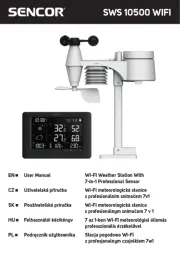
29 Juli 2025
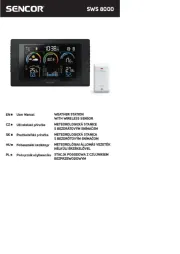
29 Juli 2025
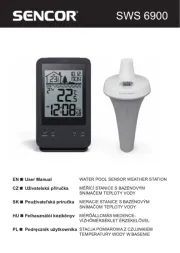
29 Juli 2025
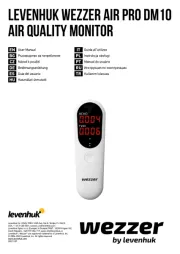
15 Juli 2025
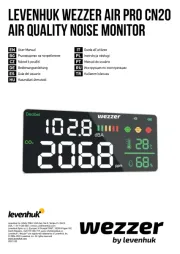
15 Juli 2025
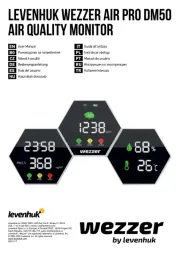
14 Juli 2025
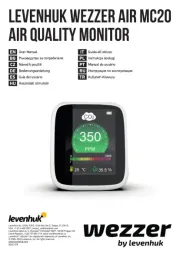
14 Juli 2025
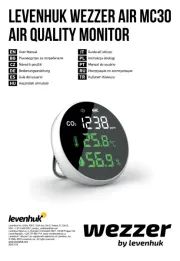
14 Juli 2025
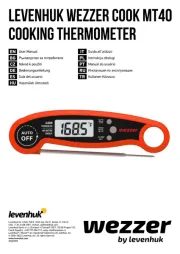
14 Juli 2025
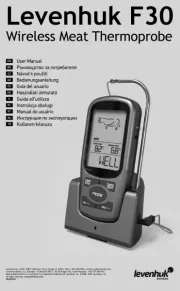
14 Juli 2025